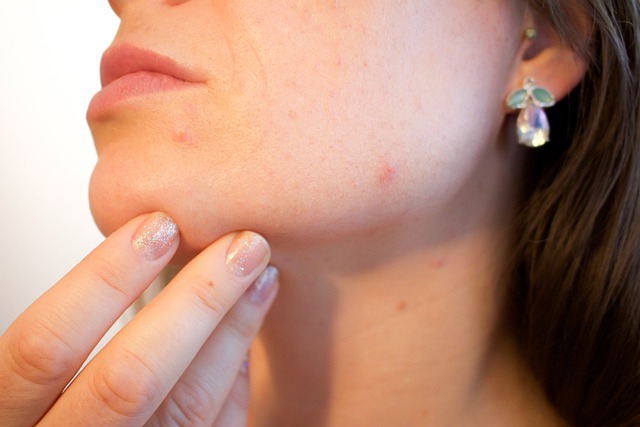When we think of acne, we usually picture teenagers battling breakouts during puberty. But for many adults, spots don’t stop after school. In fact, adult acne is more common than you might think — and it can be just as frustrating, if not more so, when it appears later in life.
If you’re tired of fighting blemishes in your 20s, 30s, 40s or beyond, you’re not alone. In this article, we’ll explore the causes of adult acne, common triggers, and the treatment options that actually work — so you can stop guessing and start seeing results.
For tailored advice and personalised treatment plans, it’s always a good idea to see a doctor online and get expert support for your skin.
What Is Adult Acne?
Adult acne refers to spots, blackheads, whiteheads or deeper cysts that appear in people aged 25 and over. It can show up anywhere, but often appears on the lower face, jawline, chin, back and shoulders.
While some people may be dealing with acne that’s persisted since their teenage years, others experience it for the first time well into adulthood.
What Causes Adult Acne?
There’s no single cause of acne, but several factors can contribute to it, including:
1. Hormonal Fluctuations
Hormones are one of the biggest culprits behind adult acne — especially in women. Fluctuations during the menstrual cycle, pregnancy, perimenopause, and conditions like polycystic ovary syndrome (PCOS) can trigger increased oil production and clogged pores.
2. Stress
Stress doesn’t directly cause acne, but it can lead to hormonal changes (especially an increase in cortisol) that make breakouts worse. It can also lead to picking or touching your skin more often, which can aggravate the issue.
3. Skincare and Cosmetic Products
Using products that aren’t right for your skin type — or that are too heavy or oily — can clog pores and lead to spots. Look for “non-comedogenic” labels on products to reduce the risk.
4. Diet
Some people find that dairy, high-sugar foods, or high glycaemic index carbohydrates (like white bread and sweets) can worsen their acne. While diet doesn’t cause acne in everyone, it’s worth keeping a food diary to track potential triggers.
5. Genetics
If your parents had acne, you’re more likely to experience it too. Your skin type and how your body responds to inflammation or hormonal changes can be inherited.
6. Medication and Medical Conditions
Certain medications — such as steroids, some birth control pills, or lithium — can contribute to acne. Additionally, underlying health issues like PCOS can present with acne as a key symptom.
What Does Adult Acne Look Like?
Adult acne can take different forms, including:
- Papules: Small red bumps
- Pustules: Red bumps with white centres
- Cysts: Large, painful lumps beneath the skin
- Blackheads and whiteheads: Non-inflammatory clogged pores
It can range from mild to severe and may come with sensitivity, scarring or post-inflammatory hyperpigmentation — especially in darker skin tones.
Effective Treatments for Adult Acne
Adult acne can be stubborn, but the right treatment can make a world of difference. Here’s what actually works:
1. Topical Treatments
Over-the-counter products with ingredients like benzoyl peroxide, salicylic acid, or retinoids can help unclog pores, reduce inflammation, and promote skin turnover. Prescription-strength versions may be needed for moderate or severe cases.
2. Oral Medications
A GP may prescribe:
- Antibiotics to reduce inflammation and bacteria
- Combined oral contraceptives (for women) that regulate hormones
- Anti-androgen medications like spironolactone (used off-label in the UK) for hormonal acne
- Isotretinoin for severe or cystic acne (usually under specialist supervision)
3. Professional Treatments
Dermatological procedures such as chemical peels, light therapy (LED or laser), or microneedling can also be effective, especially for scarring or resistant acne.
4. Lifestyle and Skincare Changes
- Keep your skincare routine simple and consistent.
- Use a gentle cleanser and oil-free moisturiser.
- Avoid scrubbing the skin harshly or using alcohol-based products.
- Wash your pillowcases, phones and makeup brushes regularly.
And remember: consistency is key. Most treatments take at least 6–8 weeks to show improvement.
When to See a GP
If your acne is affecting your confidence, causing scarring, or not responding to shop-bought treatments, it’s time to speak to a doctor. Acne is a medical condition, and you deserve effective, evidence-based treatment.
With services like tapGP, you can see a doctor online without leaving your home — perfect if you’re feeling self-conscious about your skin or short on time.
A GP can assess your skin, help identify potential triggers, and recommend the most appropriate treatment based on your skin type, lifestyle and medical history.
Final Thoughts
Adult acne is more common than you might realise, and it’s nothing to be ashamed of. Whether your breakouts are hormonal, stress-related or down to other factors, there are treatments that can genuinely help.
Don’t suffer in silence or waste money on miracle creams. If you’re struggling with persistent or painful acne, see a doctor online and take the first step towards clearer, healthier skin — and a more confident you.

